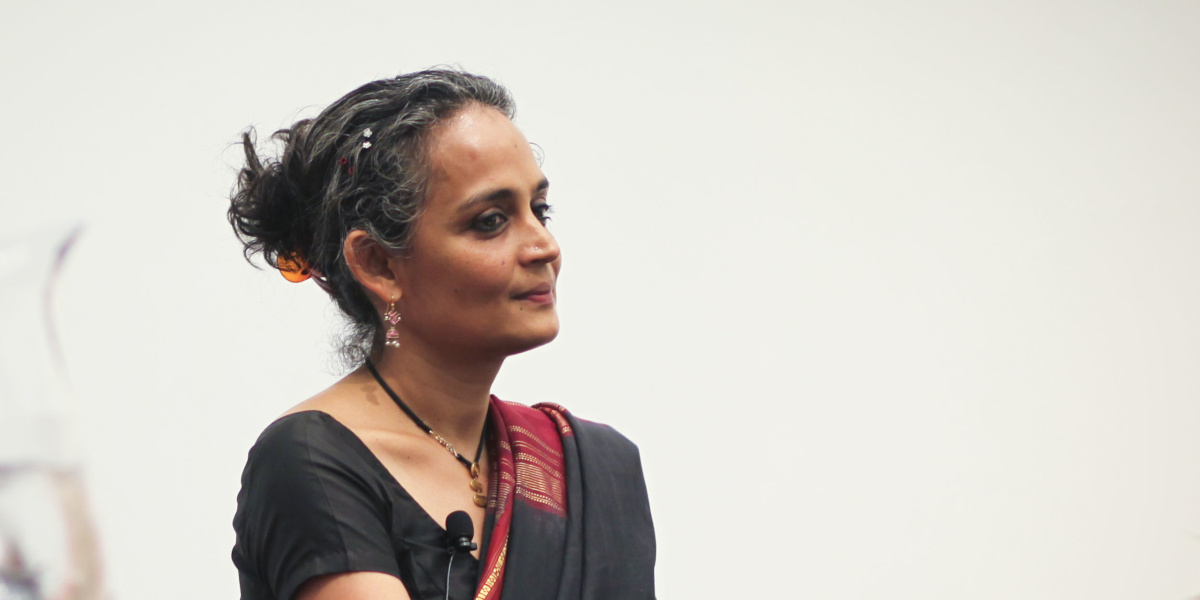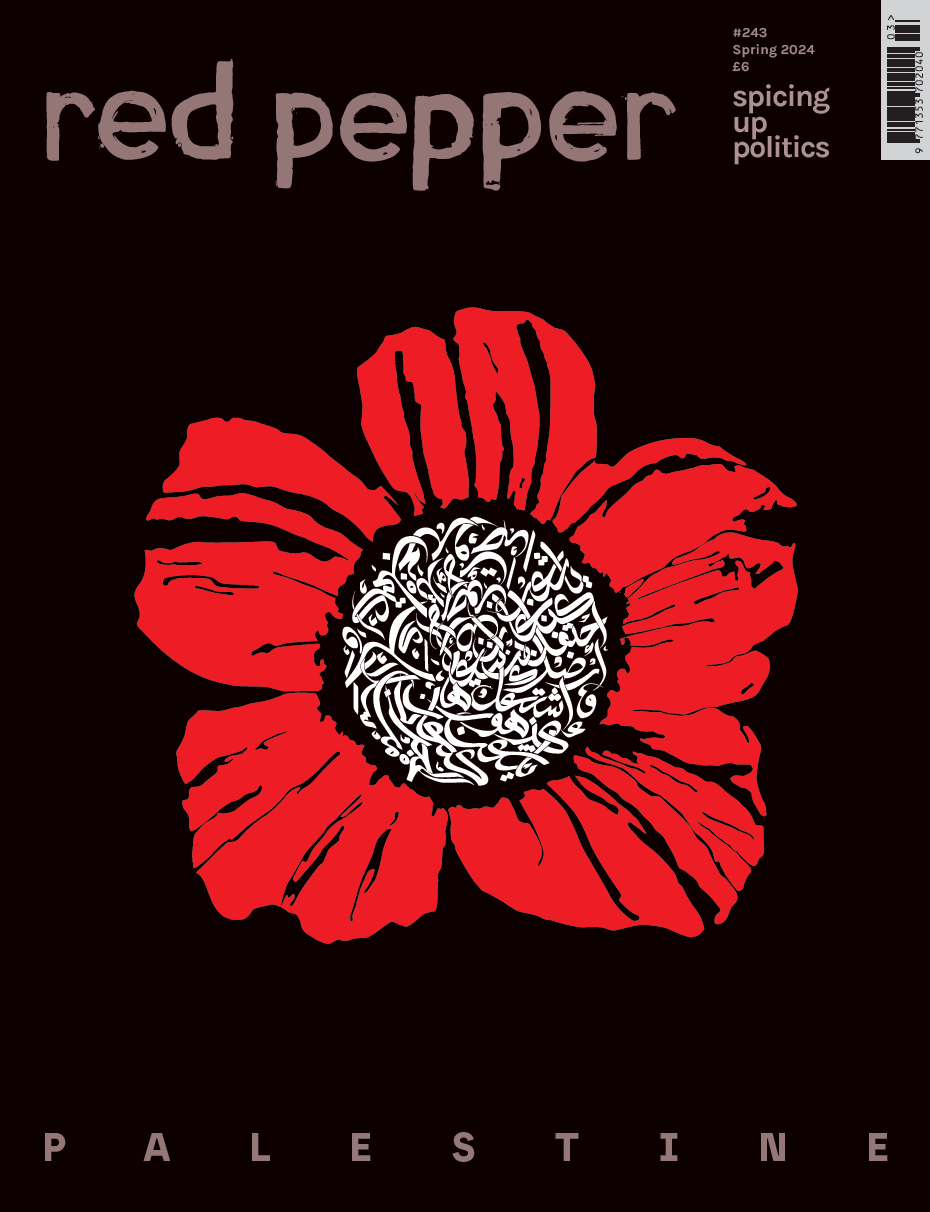During a psychotic episode, Arundhati Roy’s mother, Mary Roy, or Mrs Roy, developed a fixation on knowing the caste and religion of every doctor, nurse and cleaner who attended to her. Fed up with this mania, Roy smashed a chair near her mother’s bed.
It was the first time Roy had shown such brazen insubordination to the matriarch. ‘When I think back to that night, those knotted feelings, all that twisted, matted anger, the foetid threads of caste and feudal hierarchy that slither into our souls even in our most intimate moments of insanity, vulnerability and mortality, my mind shuts down,’ Roy reflects.
Mrs Roy is angry, cruel and resentful toward Roy and her brother because of the lack of support she has in raising them and because of their ‘nothing man’ of a father. She reminds Roy frequently that she tried, unsuccessfully, to abort her. When Roy herself became pregnant in her twenties, her fear of motherhood was so great that she risked her life to have an abortion without anaesthesia.
The trauma that Mrs Roy faced from her parents echoes generational trauma. The maternal grandfather was an Imperial Entomologist, and it was to escape his brutality to which Roy attributes her mother’s haste in choosing a husband who turned out to be an alcoholic.
Mrs Roy kept her husband’s high-caste last name, showing that between the two traumas, one was preferable.
Storm and shelter
By the end of this memoir, Roy has seemingly made peace with her mother’s treatment, acknowledging her dual role as both shelter and storm in her life. Throughout the book, her mother is everything from a patient hunter to a radically kind person.
Roy celebrates her mother’s role in the feminist struggle for property rights and as an educator, though she does not shy from noting that her feminism was bourgeois and her role as an educator was at a private school.
Her mother helped strike down the Travancore Christian Succession Act, which had restricted daughters to only a quarter of a son’s share or 5,000 rupees, whichever was less. The Supreme Court ruling replaced this with the Indian Succession Act, granting daughters equal inheritance rights with sons.
In a society shaped heavily by a pernicious caste system, it is hard to imagine how Roy’s mother and grandmother treated women below them in the hierarchy. Being high-caste Christians, they were at the top of the pecking order. Roy, however, makes the cornerstone of the book the wrath the matriarch reserved for her own children.
Political identity
As a teenager, she cut off contact with her mother for an extended period while studying architecture in Delhi, while her mother remained in Kerala running the school. This time, studying architecture and living with a boyfriend outside the traditional arranged marriage system made Roy a ‘strange person of a somewhat vagrant disposition’.
The patterns established in childhood of confronting a formidable matriarch while admiring her fierce skills as a feminist, educator and businesswoman became the very template of Roy’s public life
She moved to Goa with her boyfriend after graduating. However, his love was too stable; it ‘disconcerted’ her. The trauma of her decision to leave him tore her apart, though she could not explain it either to herself or to him.
Then came her foray into films and her marriage to Pradeep, the filmmaker. She formed a bond with his children, accepting her role as a stepmother.
Both left filmmaking. Pradeep became a desert ecologist and scholar and spent long periods away. Roy started her writing journey. It suited them and it lasted decades. During this time, she reconciled with her mother. The matriarch, back in Kerala, bought plots of land around her school, gentrifying Kottayam (though Roy does not use that word).
This intricate personal history is the forge that shaped Roy’s political identity. The patterns established in childhood of confronting a formidable matriarch while admiring her fierce skills as a feminist, educator and businesswoman became the very template of Roy’s public life.
Antagonising nationalism
Perhaps Roy assumes the role of antagonist to the Indian right because of her familiarity with it. She played this role as a child, an innocent child steamrolled into being a villain.
By the late 1990s, she had established herself as a fiction writer, but it was her political writing that riled the right more. Her first major essay was ‘The End of Imagination’, published in 1998.
Again, connected to her childhood trauma, she did not want to be a safe fiction author. Critics asked what she was writing: was it academic, critical or a travelogue? Hindu nationalists abhor Roy for seeing humanity in Kashmiris, Maoists and Narmada Valley dam defenders.
Roy preserves her commitment to those on the frontlines of the very struggles she writes about. She tenderly writes about her late friend, Professor G N Saibaba, the disabled human rights activist and former Delhi University professor who was imprisoned for years under India’s draconian anti-terror laws. She is saving a jar of mango pickle he gave her and vows to keep it with her until she dies. She says maybe her readers are saving her from a similar destiny inflicted on dissenters by the State.
Discomfort zone
The abuse hurled at her by critics on the right take her back to the only childhood she knows, one rife with her mother’s insults. Her mother called her ‘prostitute’, ‘keep’, ‘bitch’ and draws the parallel in being called ‘that woman’ by her critics now. She jokes that she refers to herself as a hooker who won the Booker.
The liberal foundations of the mother and daughter’s activism can be acknowledged, yet it is their conscious departure from that comfort zone that defines them. Mrs Roy provided a difficult but formative training ground. Roy is now setting up these grounds for herself again and again by rallying against the Hindu nationalists without inhibition.










